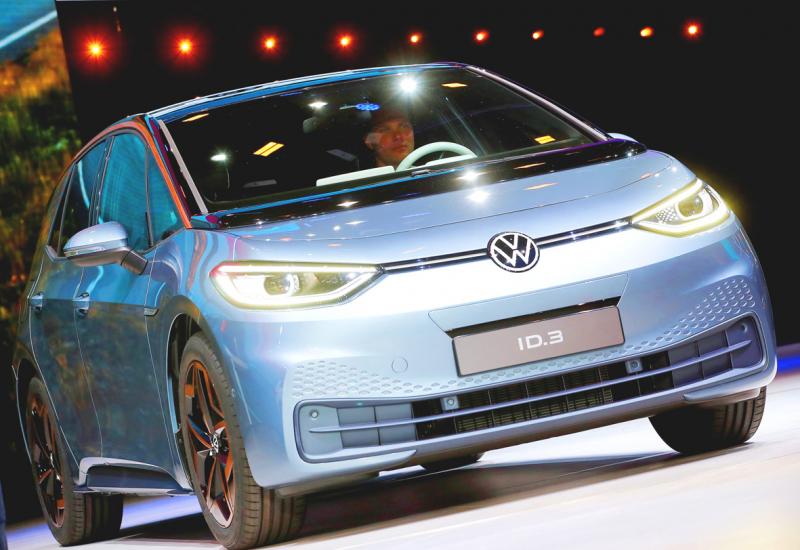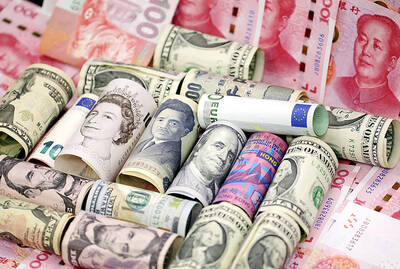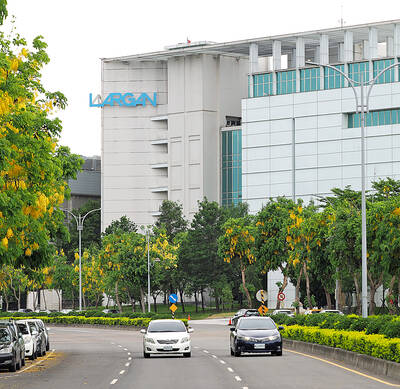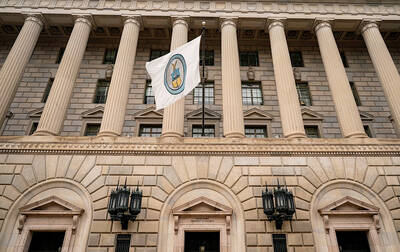When finance types talk about internal combustion engines, they often just use the abbreviation ICE. It is an appropriate name: Investors have a frosty view of auto companies that depend on gasoline or diesel to power their vehicles.
Volkswagen AG, the world’s biggest automaker by sales, has a market value of 73 billion euros (US$87 billion), or about 6.5 times the earnings it generated last year.
By contrast, Tesla Inc’s all-electric lineup has propelled it to an astonishing US$352 billion valuation, even though its profits are tiny.

Photo: Reuters
Budding Teslas, such as Rivian Automotive Inc and Nikola Corp, have achieved multibillion-dollar valuations before even delivering their first electric vehicles.
The traditional industry giants of Germany and Detroit, such as Volkswagen and General Motors Co (GM), must be hugely frustrated by the market’s favoring of Tesla chief executive Elon Musk and his upstart peers.
Tesla has impressive software and battery technology, but others know how to build a decent electric vehicle now. Established automakers are spending tens of billions of dollars on doing exactly this; they just are not very good at getting credit for it. Some environmentally focused investors refuse to ignore the fact that the incumbents still make lots of gas-guzzling sports utility vehicles.
So perhaps the answer is for automakers to spin off their electric-vehicle activities to try to get the market to ascribe them Tesla-like valuations.
It is an approach that has worked for utilities, which are gradually freeing their renewable-energy assets from the shackles of their legacy hydrocarbon businesses.
GM and Volkswagen have made massive bets on electric vehicles. Their battery technology is increasingly competitive and they have sought partners to build their own battery-cell plants, as Tesla has done with Panasonic Corp.
Their new vehicles are pretty eye-catching too. In the autumn, GM is to launch an electric version of its hulking Hummer, which could give Tesla’s much-hyped Cybertruck some serious competition.
Meanwhile, Volkswagen has just launched the ID.3 compact, the first vehicle built on its new “MEB” vehicle platform, which would be used as the base for its other mass-market electric models.
Volkswagen is licensing the platform to other automakers, including Ford Motor Co, so it could become a money spinner.
The German company will probably pass Tesla and become the world’s largest producer of electric vehicles in 2022, when it should sell more than 1 million battery-powered vehicles, Deutsche Bank AG analyst Tim Rokossa has said.
You can see why Rokossa and his US colleagues are urging GM and Volkswagen to separate their electric-vehicle activities. This would help unlock value and maybe let the companies raise capital more easily.
GM has already separated its Cruise autonomous-driving unit, helping it to raise billions of dollars from investors including Softbank Group Corp’s Vision Fund. Why not do similar with GM’s Ultium battery system and the GM vehicles that use it?
Other industries upended by the energy transition are thinking along similar lines.
German utility RWE AG’s shares have soared since it completed an asset swap with rival Eon SE that left it much more focused on generating clean electricity. This week RWE took advantage of that high valuation by raising 2 billion euros of fresh capital.
GM on a recent investor call sounded somewhat open to the idea of a green spinoff, although Volkswagen was more circumspect. In part, this reluctance is partly down to Europe’s environmental regulations. The legacy Volkswagen business needs to include electric vehicles to keep the average emissions of its fleet within European guidelines.
Automakers are also naturally wary of hiving off all of their most promising technology, such as electric batteries, for fear that investors might mark down the remaining ICE business as a “bad bank” — albeit a profitable one. How wise is it to chase Tesla’s nosebleed valuation anyway? It cannot be justified by any normal metric.
Volkswagen’s complicated governance is another barrier to change. Minority shareholders take a backseat to the Porsche and Piech families, the state of Lower Saxony and the trade unions.
I have written before about how the company’s luxury brands — Porsche, Lamborghini and Bugatti — might be worth as much as 100 billion euros if listed separately and valued like rival Ferrari NV. The people who call the shots at Volkswagen have not embraced the idea.
A full separation of VW’s MEB business is probably unrealistic, but even separate financial disclosure might help the valuation, Rokossa said.
Still, there is something enticing about an electric spinoff, which might be good for shareholders and workers.
Tesla has been able to raise more than US$15 billion from supportive investors over the past decade, and it could probably raise another US$5 billion tomorrow if it wanted.
Volkswagen, meanwhile, must fund its electric investments — estimated at 30 billion euros over five years — mostly from its own cash flows, meaning there is less money left over to pay employees.
Perhaps if Tesla did weaponize its share price by raising another enormous chunk of cheap capital, that might convince rivals to think more creatively.
Chris Bryant is a Bloomberg Opinion columnist covering industrial companies. He previously worked for the Financial Times.
This column does not necessarily reflect the opinion of the editorial board or Bloomberg LP and its owners.

Taiwan’s foreign exchange reserves hit a record high at the end of last month, surpassing the US$600 billion mark for the first time, the central bank said yesterday. Last month, the country’s foreign exchange reserves rose US$5.51 billion from a month earlier to reach US$602.94 billion due to an increase in returns from the central bank’s portfolio management, the movement of other foreign currencies in the portfolio against the US dollar and the bank’s efforts to smooth the volatility of the New Taiwan dollar. Department of Foreign Exchange Director-General Eugene Tsai (蔡炯民)said a rate cut cycle launched by the US Federal Reserve

Handset camera lens maker Largan Precision Co (大立光) on Sunday reported a 6.71 percent year-on-year decline in revenue for the third quarter, despite revenue last month hitting the highest level in 11 months. Third-quarter revenue was NT$17.68 billion (US$581.2 million), compared with NT$18.95 billion a year earlier, the company said in a statement. The figure was in line with Yuanta Securities Investment Consulting Co’s (元大投顧) forecast of NT$17.9 billion, but missed the market consensus estimate of NT$18.97 billion. The third-quarter revenue was a 51.44 percent increase from NT$11.67 billion in the second quarter, as the quarter is usually the peak

The US government on Wednesday sanctioned more than two dozen companies in China, Turkey and the United Arab Emirates, including offshoots of a US chip firm, accusing the businesses of providing illicit support to Iran’s military or proxies. The US Department of Commerce included two subsidiaries of US-based chip distributor Arrow Electronics Inc (艾睿電子) on its so-called entity list published on the federal register for facilitating purchases by Iran’s proxies of US tech. Arrow spokesman John Hourigan said that the subsidiaries have been operating in full compliance with US export control regulations and his company is discussing with the US Bureau of

Pegatron Corp (和碩), a key assembler of Apple Inc’s iPhones, on Thursday reported a 12.3 percent year-on-year decline in revenue for last quarter to NT$257.86 billion (US$8.44 billion), but it expects revenue to improve in the second half on traditional holiday demand. The fourth quarter is usually the peak season for its communications products, a company official said on condition of anonymity. As Apple released its new iPhone 17 series early last month, sales in the communications segment rose sequentially last month, the official said. Shipments to Apple have been stable and in line with earlier expectations, they said. Pegatron shipped 2.4 million notebook